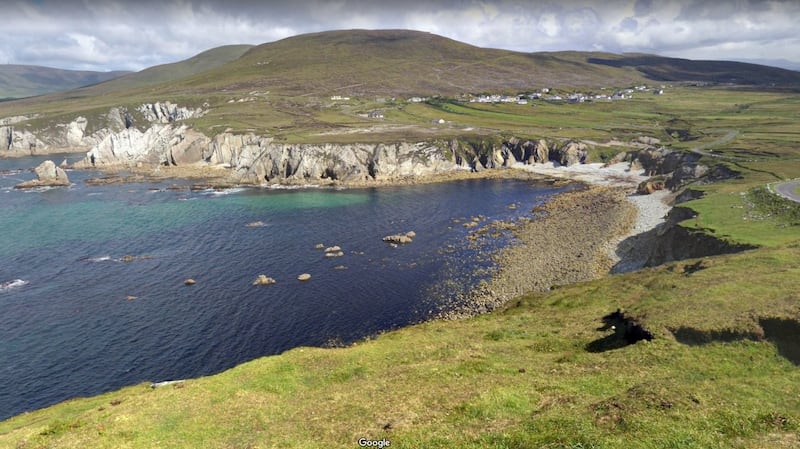When Atlantic forces returned a sandy beach – which had vanished over 30 years before – to Achill, the Co Mayo island's tourist office could not believe its good fortune.
Not only was Dooagh famous for its association with British novelist Graham Greene and actress Angela Lansbury, but it was also a strand that sustained a community with abundant bladderwrack or seaweed during spring tides.
Now some six months and one bumper summer season later, Achill can boast a second returning beach – this time at Ashleam Bay, which is some 10km as a bird, or a drone, might fly from Dooagh.

In fact, Achill Tourism manager Sean Molloy was so delighted and excited that he had a drone out and airborne almost as soon as he heard the news from Ashleam resident Malcolm Cooney and his neighbour.
Ashleam, a Wild Atlantic Way “discovery point” on Achill’s southern coast, is a small pebbly cove approached by a series of hairpin bends, and enclosed by 30 metre-high white cliffs. It is also known in Irish as Port na hAille, after the sea cliffs.
Cooney, who runs his own business, is a regular visitor to the cove, as he likes to walk down and “clear the head”.
Folklore has it that the sand would return every seven years, but Cooney last witnessed it for a brief few weeks in 2005, and in 2001 before that.
“And before that again it was when I was a child, which was over 20 years ago, and it lasted about a year then,” he says.
Wartime mine
He remembers a wartime mine being washed in and disposed of by an Army munitions team – again, with no sand around it. At one point – when there must have been sand, but also seclusion – it was a nudist beach.
“Every time I go down there it changes, it’s always different, never the same,” he says.
However, the change he witnessed over the past few months was more dramatic. An initial foray of sand in March receded over the summer and then returned to stay by October, covering pebbles and large rocks below the cliffs.
NUI Galway (NUIG) geographer Dr Kevin Lynch, who is involved in a coastal monitoring project with the Environmental Protection Agency (EPA) on the north side of Achill, explains that the returning beaches are a natural outcome of hydrodynamics and sediment supply.
“In Dooagh’s case, the wind direction changed the hydrodynamics of the bay, and may have washed in an offshore sandbank,” he says.
“This may be similar for Ashleam, and it could be that erosion on one part of the coast has provide a new sediment supply.”
“It tends to happen more often on the Wexford coast, and long-term studies show it has nothing to do with climate change,” Dr Lynch says.
House-building
However, man is having an impact, as increased pressure for house-building and construction on the coast can interfere with natural dynamic forces. Similarly, hard engineering “solutions” to coastal erosion can also cause problems elsewhere.
Sean Molloy and his Achill Tourism crew are hoping Ashleam's strand will see in the new year. He fielded some 12 television crews from all over the globe after Dooagh's return, and a company that analyses media trends told him that more than more than 1.16 billion people read about it or saw it on television after The Irish Times report.
Visitor numbers to the island’s two tourism centres increased by 67 per cent, the tourism season extended by two months and it resulted in14.4 per cent increase in tourism employment – as in some 79 additional jobs.
“Fortunately, Achill is not short of beautiful locations, fabulous beaches and stunning scenery, but even by its high standards, Ashleam Bay is something special,” he says.









